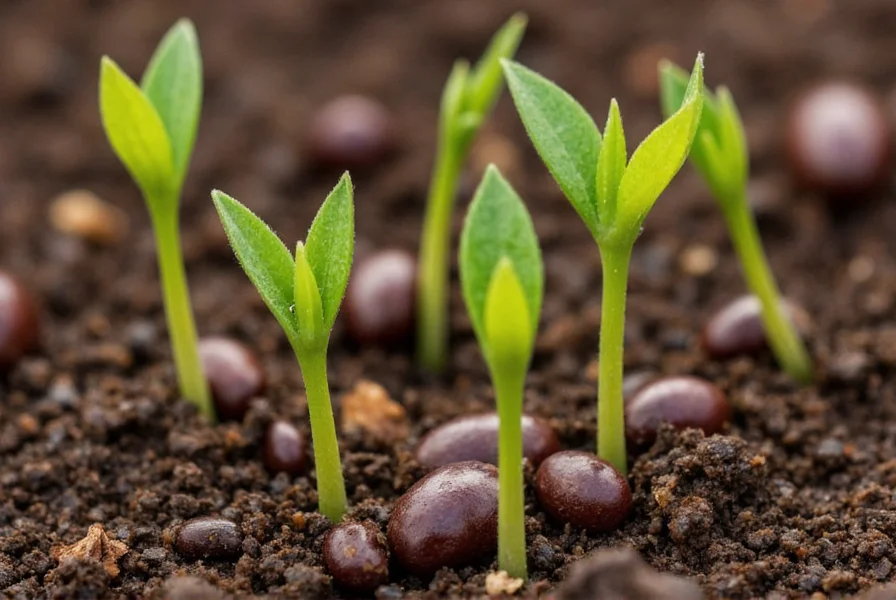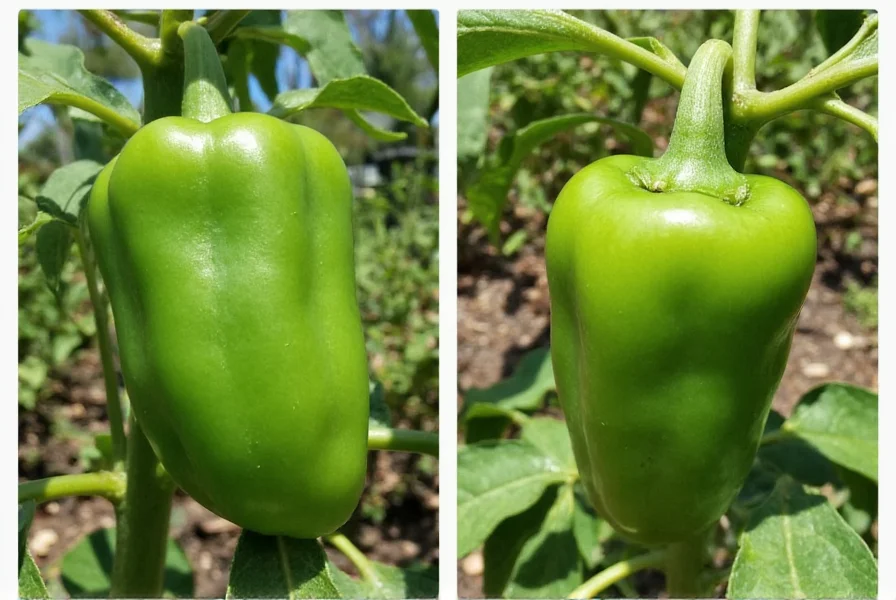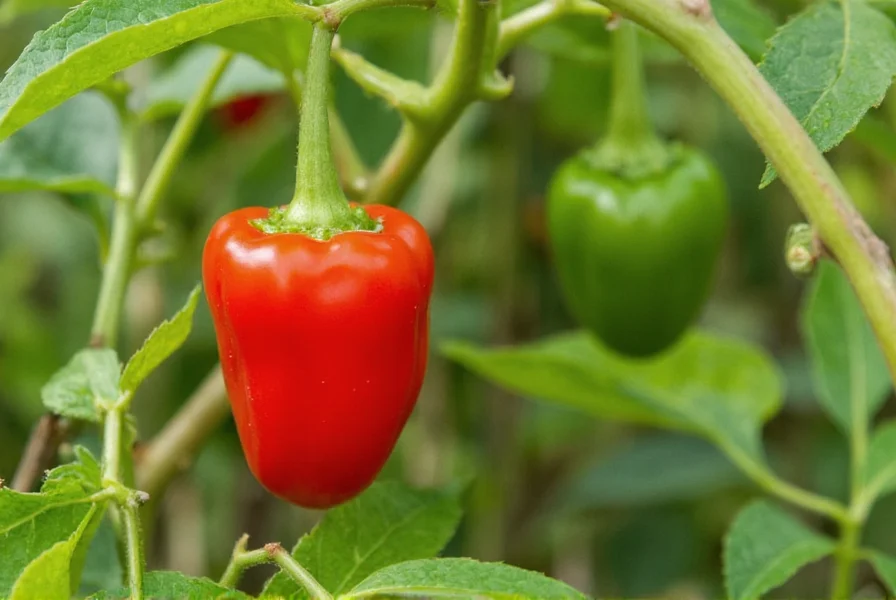 Growing Fresno peppers from seed offers gardeners control over the entire cultivation process, resulting in healthier plants and higher yields. Unlike purchasing seedlings, starting from fresno pepper seeds allows you to select specific varieties and ensures your plants haven't been exposed to diseases common in nursery environments. This comprehensive guide covers everything you need to successfully cultivate these versatile peppers in your home garden.
Growing Fresno peppers from seed offers gardeners control over the entire cultivation process, resulting in healthier plants and higher yields. Unlike purchasing seedlings, starting from fresno pepper seeds allows you to select specific varieties and ensures your plants haven't been exposed to diseases common in nursery environments. This comprehensive guide covers everything you need to successfully cultivate these versatile peppers in your home garden.
Optimal Growing Conditions for Fresno Pepper Seeds
Fresno pepper plants thrive in warm conditions with consistent moisture. These peppers require at least 6-8 hours of direct sunlight daily for optimal fruit production. The ideal soil pH ranges between 6.0 and 6.8, with well-draining soil rich in organic matter. Before planting fresno pepper seeds outdoors, ensure both air and soil temperatures remain consistently above 60°F, with ideal germination occurring between 70-85°F.
When considering how to grow fresno pepper seeds successfully, soil preparation proves critical. Amend garden beds with 2-3 inches of compost mixed to a depth of 8-12 inches. This improves drainage while providing essential nutrients. For container growing, use a high-quality potting mix rather than garden soil, as fresno pepper seeds require excellent drainage to prevent damping-off disease.
Planting Fresno Pepper Seeds: Step-by-Step Guide
Starting fresno pepper seeds indoors gives you a significant head start on the growing season. Begin the seed starting process 8-10 weeks before your last expected frost date:
- Fill seed trays with sterile seed starting mix
- Plant fresno pepper seeds 1/4 inch deep
- Maintain consistent soil temperature of 75-85°F using a heat mat
- Keep soil moist but not waterlogged
- Provide 14-16 hours of grow light daily once sprouted
- Transplant seedlings into larger pots when they develop their second set of true leaves
- Harden off plants for 7-10 days before moving outdoors permanently
The fresno pepper seeds germination time typically ranges from 7-14 days under optimal conditions. If germination takes longer than 21 days, the seeds may be too old or conditions suboptimal. Properly stored fresno pepper seeds maintain viability for 2-3 years when kept in a cool, dark, dry environment.
Care and Maintenance for Healthy Plants
Once established, Fresno pepper plants require consistent care to maximize yield. Water deeply 1-2 times weekly rather than frequent shallow watering, allowing the top inch of soil to dry between waterings. During flowering and fruit set, maintain even moisture to prevent blossom end rot.
| Stage | Fertilizer Recommendation | Application Frequency |
|---|---|---|
| Seedling stage | Balanced liquid fertilizer (10-10-10) at half strength | Every 2 weeks |
| Transplanting | Phosphorus-rich fertilizer (5-10-5) | At time of transplanting |
| Flowering stage | Potassium-focused formula (5-10-15) | Every 3-4 weeks |
Mulching around plants helps maintain consistent soil moisture and temperature while suppressing weeds. Organic mulches like straw or shredded leaves work particularly well for fresno pepper seedlings once they're established in the garden.
Harvesting and Using Your Fresno Peppers
Fresno pepper seeds produce plants that typically reach maturity in 70-90 days from transplanting. Harvest peppers when they've reached full size (2-3 inches long) and developed their characteristic smooth, glossy appearance. Green Fresnos offer a grassier flavor, while fully ripened red peppers provide sweeter, fruitier notes with slightly more heat.
Unlike many chili varieties, Fresnos maintain excellent flavor whether harvested green or red. For continuous production, harvest peppers regularly as the plant will continue setting new fruit. Use clean scissors or pruning shears to avoid damaging the plant when harvesting fresno peppers from your garden.
Fresno Pepper Seeds vs. Similar Varieties
Many gardeners confuse Fresno peppers with jalapeños, but several key differences exist. While both belong to the Capsicum annuum species, fresno pepper seeds produce plants that yield smaller, slightly hotter peppers with a more complex flavor profile. Fresnos measure 2,500-10,000 Scoville units compared to jalapeños' 2,500-8,000 range.
The fresno pepper seeds vs jalapeno seeds comparison reveals subtle but important distinctions. Fresno plants tend to be more compact with thinner walls, making them better suited for fresh applications rather than canning. Their fruit matures faster than many jalapeño varieties, providing an earlier harvest in shorter growing seasons.
Troubleshooting Common Growing Issues
Gardeners growing fresno pepper seeds may encounter several common challenges. Blossom drop often occurs when temperatures exceed 90°F or drop below 60°F. To prevent this, provide afternoon shade during extreme heat and use row covers during unexpected cool spells.
Yellowing leaves typically indicate either overwatering or nutrient deficiency. Check soil moisture before watering, and consider a balanced fertilizer application if leaves yellow between veins (indicating magnesium deficiency). For organic fresno pepper seed growing, apply epsom salts (1 tablespoon per gallon of water) as a foliar spray to address magnesium issues.
Pepper plants grown from fresno pepper seeds may occasionally develop anthracnose or bacterial spot. Prevent these issues through crop rotation, proper spacing for air circulation, and avoiding overhead watering. Remove and destroy affected plant material immediately to prevent disease spread.

Frequently Asked Questions
How deep should I plant fresno pepper seeds?
Plant fresno pepper seeds 1/4 inch deep in seed starting mix. Planting too deep can prevent germination, while too shallow may cause the seeds to dry out. Maintain consistent moisture until seedlings emerge, typically within 7-14 days under optimal conditions.
Can I grow fresno peppers from seeds in containers?
Yes, fresno pepper seeds grow well in containers with proper care. Choose pots at least 12 inches in diameter with drainage holes. Use high-quality potting mix rather than garden soil, and maintain consistent moisture. Container-grown plants may require more frequent watering and fertilization than garden-planted peppers.
How long do fresno pepper seeds remain viable?
Properly stored fresno pepper seeds maintain good germination rates for 2-3 years. Store seeds in an airtight container in a cool, dark, dry place. For extended storage, keep seeds in the refrigerator. Test older seeds by placing 10 on a damp paper towel in a sealed bag to check germination percentage before planting.
Why aren't my fresno pepper seeds germinating?
Poor germination of fresno pepper seeds typically results from incorrect soil temperature (below 70°F), inconsistent moisture, or old seeds. Ensure soil temperature remains between 75-85°F using a heat mat, keep soil consistently moist but not soggy, and verify seed freshness. Germination should occur within 7-14 days under optimal conditions.
Do fresno pepper plants need to be pruned?
Light pruning benefits fresno pepper plants grown from seed. Remove the first set of flowers to encourage stronger root and branch development. Later in the season, prune lower branches that touch the soil to improve air circulation and prevent disease. Avoid excessive pruning, as peppers need ample foliage to protect fruit from sunscald.











 浙公网安备
33010002000092号
浙公网安备
33010002000092号 浙B2-20120091-4
浙B2-20120091-4